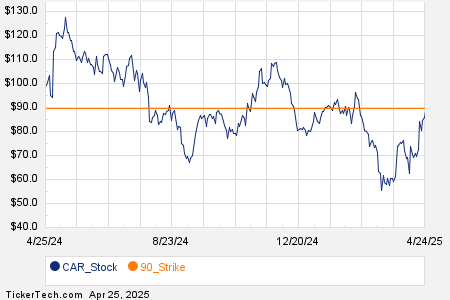Note: Costco FY’24 ended on September 1, 2024.
Costco Stock Surges as Earnings Beat Expectations: What’s Driving the Growth?
Warehouse club operator Costco (NASDAQ: COST) has seen its stock increase by 52% this year, nearly doubling the S&P 500’s return. However, its competitor Walmart (NYSE: WMT) has outperformed, with an 80% rise in stock value over the same time frame. So, what’s influencing Costco’s stock performance?
Costco recently announced strong earnings, pushing stock prices up 1.5% to around $1000 per share. In its fiscal first quarter, which wrapped up on November 24, the retailer reported earnings per share of $4.04, showing a 13% increase year-over-year. Its revenue also showed positive growth, reaching $62.15 billion, an 8% rise from the previous year. Analysts had predicted $3.79 per share and $62.08 billion in revenue. Additionally, comparable sales in the U.S. rose by 5.2% year-over-year, with traffic increasing by 5.1% globally and 4.9% in the U.S. Even with setbacks like gas price drops and currency exchange issues, worldwide average tickets increased by 0.1%, and in the U.S., it was up by 0.3%. Costco’s focus on customer satisfaction and steady revenue growth has positioned it well for future success, particularly with new clubs opening in the U.S. and expanding operations in countries like China.
Throughout the challenges posed by the pandemic and rising inflation, Costco has thrived. It’s important to highlight that a significant portion of Costco’s profit comes from membership fees, making comparable sales growth less critical compared to other retailers. For Q1, membership fee income totaled $1.2 billion, an 8% increase compared to the same quarter last year. This is significant because it’s the first full quarter reflecting the 8.3% fee increase implemented on September 1, 2024. Premium memberships now cost $130 instead of $120, and the maximum annual 2% reward for executive members increased to $1,250 from $1,000, while basic members now pay $65, up from $60. Historically, Costco raises its membership fees about every five years, making this recent adjustment notable given the previous hike occurred in 2017, with inflation possibly playing a role in this longer interval.
Remarkably, Costco’s stock (COST) has consistently yielded better returns than the market in the last three years, achieving 52% in 2021, -19% in 2022, and 49% in 2023. Meanwhile, the Trefis High Quality (HQ) Portfolio, which includes 30 stocks, has experienced much lower volatility and surpassed the S&P 500 in each year of that period. This highlights the HQ Portfolio’s ability to provide better returns with less risk, presenting a smoother investment experience.
As the first quarter concluded, Costco had 77.4 million paid household members, representing an 8% increase year-over-year. The total number of cardholders rose to 139 million, up 7%, showing solid growth over the past few quarters. Renewal rates remained strong, with U.S. and Canadian rates at 92.8%, down marginally from the previous quarter. Worldwide rates were recorded at 90.4%, also a slight decline. The slight decrease is attributed to increased digital sign-ups that generally renew at a lower rate. A high renewal rate is crucial, ensuring consistent membership fee revenue and enhancing overall profitability. It is essential to monitor this in the context of Costco’s growth strategy.
The projection for Costco’s stock valuation has been revised to $973 per share, based on an expected EPS of $18.07 and a P/E multiple of 53.9x for fiscal year 2025. The anticipated revenue for the same year is around $273 billion, a 7% yearly increase. Comparing current valuation at 54 times earnings, significantly higher than the pre-pandemic range of 25 to 30 P/E, suggests multiple possibilities for the stock’s trajectory. It may drop until the valuation aligns with historical averages, particularly if a recession affects the broader stock market, or it might fluctuate as earnings grow to meet valuation expectations.
Though high food inflation continues to challenge consumers, Costco stands to benefit by passing on savings. The retailer also began selling gold in August 2023 and silver in January 2024, offering competitive pricing approximately 2% above spot prices for members, with additional cash back rewards for executive members and holders of the Citi card.
To better understand market performance, explore how COST’s Peers compare on important metrics. Additional insights can be found through Peer Comparisons, which offer valuable analyses across various industries.
| Returns | Dec 2024 MTD [1] |
2024 YTD [1] |
2017-24 Total [2] |
| COST Return | 2% | 52% | 379% |
| S&P 500 Return | 1% | 28% | 172% |
| Trefis Reinforced Value Portfolio | -1% | 23% | 816% |
[1] Returns as of 12/13/2024
[2] Cumulative total returns since the end of 2016
Invest with Trefis Market-Beating Portfolios
See all Trefis Price Estimates
The views and opinions expressed herein are the views and opinions of the author and do not necessarily reflect those of Nasdaq, Inc.


